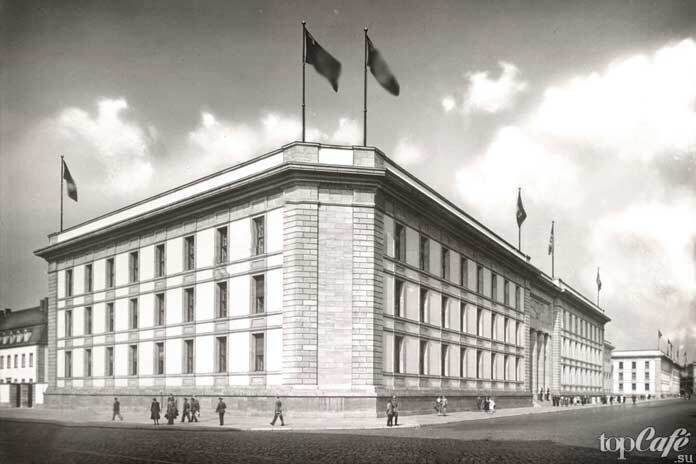History does not know the subliminal slant, but perhaps if Adolf Hitler went to the Vienna Art Academy, the history of Europe and the world would have gone quite differently. Many experts note that he had artistic talent, and he could become an outstanding architect. During the short period of National Socialism, Germany underwent fundamental changes, including in construction. In our review, we present the most majestic buildings of the Third Reich, those that have been implemented, as well as some large-scale projects not realized.
Temples of honor
In 1935, a special architectural composition was created on the square of Munich Königsplatz. Erected in memory of those who died during the 1923 beer putsch by one of Hitler’s favorite architects, Paul Troost, they were still called Temples of Honor.

In specially built Temples of honor in November 1935, the ashes of Hitler’s comrades were reburied on the beer putsch. The South and North Temple completed the architectural composition of Munich Square, and harmoniously integrated into the complex from the Administrative Building of NSDAP and «House of the Führer».
The temples of honor were blown up in 1947, and now they are only on their place base, which is thickly overgrown with ivy.
People’s Hall
In a project created by Speer at the personal direction of Adolf Hitler, this majestic structure was also called the Hall of Fame or the Great Hall.

In 1939 there was a model of the People’s Hall, which can be seen on the presented photo. The main hall was to accommodate up to 150,000 people. and the Nazis planned to hold the most important events and holidays here.
A monumental building 290 meters high, which would be completed by a huge dome, should rise above the central square of Berlin, and most importantly, show the world the power of the Third Reich and its greatness.
Berlin South Station
According to the plan of Hitler and his «court» architect Speer, it was from the Southern railway station that the main axis of Berlin, on which the main buildings and monuments of the German capital were located, should begin.

This station was to make Hitler’s long-standing dream come true - a three-meter track for large locomotives. Even the design of the station building is striking in its size, and the interior of the inner halls was decorated with columns and sculptural compositions.
In front of the station it was planned to design a large area for parades and ceremonial ceremonies. Opposite the South Station on the other side of this square was planned to build the Triumphal Arch.
House of German Art. Munich
In 1937, on the project of Paul Ludwig Tross, an exhibition building was built in the style of neoclassicism with antique columns on the facade. The construction of the facility on the Prince-Regent’s Road was personally followed by Hitler, because it, like other monumental structures, should have testified to the greatness of the German nation.
Every year, the House held exhibitions of German culture, at which Adolf Hitler made speeches before the nation. The House was supposed to be a temple of German culture, but it did not come without commerce.
The premises were used for catering, cafes, and after the war it was used by the Americans as an officer’s dining room.
Building of the new Reich's. Berlin
In the design and construction of the new building, the Reich Chancellery, Hitler gave his beloved architect Albert Speer unlimited possibilities and means.
Having demonstrated the talent of the organizer, Speer finished the construction of the new Reichskanzleiria within a year, and in 1939 Hitler and his associates entered the spacious offices of a huge building, whose facade length was 441 m.

In 1943 the aviation of the anti-Hitler coalition increasingly began to bomb Berlin, and under the building of the office built a huge bunker, which went down in history as «Fuhrerbunker».


















